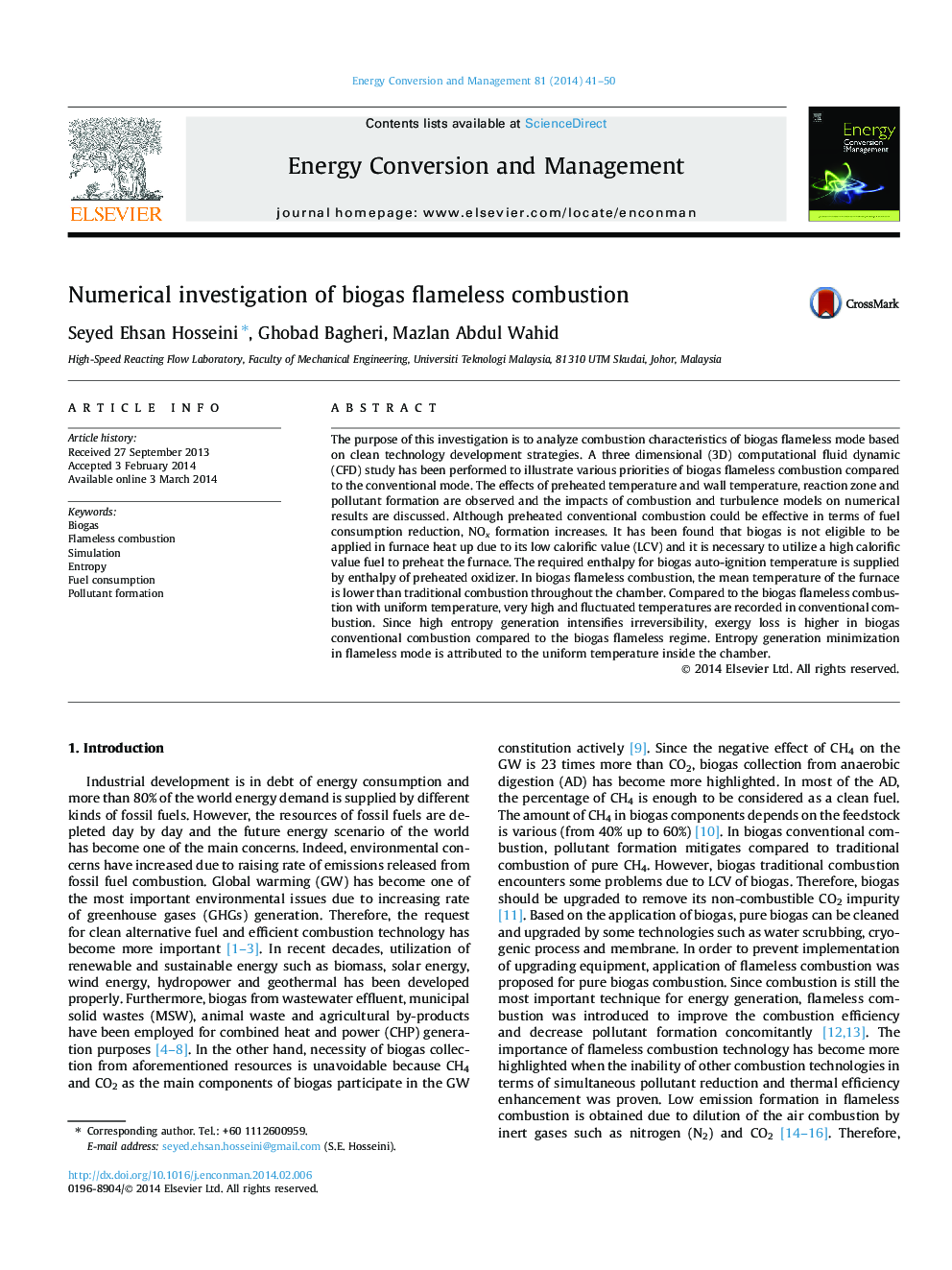| Article ID | Journal | Published Year | Pages | File Type |
|---|---|---|---|---|
| 763991 | Energy Conversion and Management | 2014 | 10 Pages |
•Fuel consumption decreases from 3.24 g/s in biogas conventional combustion to 1.07 g/s in flameless mode.•The differences between reactants and products temperature intensifies irreversibility in traditional combustion.•The temperature inside the chamber is uniform in biogas flameless mode and exergy loss decreases in this technique.•Low O2 concentration in the flameless mode confirms a complete and quick combustion process in flameless regime.
The purpose of this investigation is to analyze combustion characteristics of biogas flameless mode based on clean technology development strategies. A three dimensional (3D) computational fluid dynamic (CFD) study has been performed to illustrate various priorities of biogas flameless combustion compared to the conventional mode. The effects of preheated temperature and wall temperature, reaction zone and pollutant formation are observed and the impacts of combustion and turbulence models on numerical results are discussed. Although preheated conventional combustion could be effective in terms of fuel consumption reduction, NOx formation increases. It has been found that biogas is not eligible to be applied in furnace heat up due to its low calorific value (LCV) and it is necessary to utilize a high calorific value fuel to preheat the furnace. The required enthalpy for biogas auto-ignition temperature is supplied by enthalpy of preheated oxidizer. In biogas flameless combustion, the mean temperature of the furnace is lower than traditional combustion throughout the chamber. Compared to the biogas flameless combustion with uniform temperature, very high and fluctuated temperatures are recorded in conventional combustion. Since high entropy generation intensifies irreversibility, exergy loss is higher in biogas conventional combustion compared to the biogas flameless regime. Entropy generation minimization in flameless mode is attributed to the uniform temperature inside the chamber.
